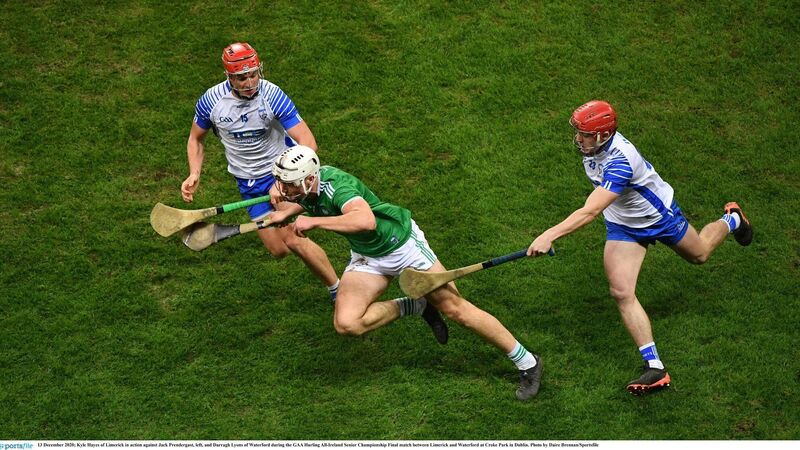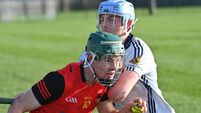How Limerick used the lockdown to their advantage

Limerick defender Kyle Hayes breaks past Jack Prendergast, and Darragh Lyons of Waterford in Sunday's All-Ireland final. Limerick players worked on improving their speed during lockdown.
Limerick’s strength and conditioning coach Michael Kiely has outlined how the All-Ireland SHC champions improved their speed during the first national lockdown.
Kiely, who took over from Joe O’Connor this season, had been concerned about the impact the break from mid March would have on players given they had been in “brilliant shape”.
After deciding with John Kiely and his management to give the players an off-season at the start of the pandemic, Ballybrown man Kiely then took the opportunity to work remotely with the players on their speed.
“Everyone was working from home at this stage and I thought, ‘Wouldn’t it be great to do a couple of blocks of speed work and speed biomechanics?’” he told Setanta College president Dr Liam Hennessy in an interview on the college's website prior to yesterday’s All-Ireland final win over Waterford. “The lads were at home and had loads of time to do it as we weren’t on the pitch. It would allow them to maximise their recovery.
“So we did two blocks, working on biomechanics and acceleration. Speed isn’t something you generally get to work on because you need time and a lot of recovery. We do speed work in sessions, but as S&C coaches we sometimes fool ourselves as to how effective we can be.
“The speed blocks resulted in improved acceleration performance over 5m and 20m on the return to training from previous testing in February, and I also believe that it built robustness. We’ve had no on-pitch soft tissue injury in Championship so far this year. I’d like to think that this work, along with the conditioning and the exposure the hurling coaches gave, contributed to that.”
Kiely also spoke of how inventive the group became in working together remotely. “We did everything we could to get players simple equipment. It wasn’t the best case scenario and this is where it’s important to have creativity as a coach. Every player had one dumbbell, one barbell with two light weights on it, one really heavy dumbbell and a medicine ball.
“We went as creative as we could and we lifted what we could. Everyone was in the same boat. There was no right or wrong answer at that time.” Kiely, who praised hurling coach Paul Kinnerk, spoke of training being more strenuous at the outset of the Championship. “We would have trained harder during the Munster championship and put more of an emphasis on tapering lately. But having that emphasis on intensity and duration was important.
“We also have a very good coach in Paul Kinnerk. Paul understands and looks for the data. He wants to know how hard the players perceive a certain game is within the session. He wants to know what level their heart rates are at, and we don’t bring the team back into training until they have recovered. We’re using that data continuously throughout a session, but it never gets in the way of the session.”
- Part of the interview can be found here.









